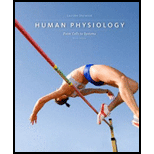
To fill:
The correct term in the given blank.
Introduction:
Cells, the smallest living entities, are the living building blocks for the immensely complicated whole body. Thus, cells are the bridge between chemicals and humans. Ultimately, all body functions of a multicellular organism rely on the collective structural and functional capabilities of its individual cells.
Answer to Problem 1RE
"The barrier that separates and controls movement between the cell contents and the extracellular fluid is the plasma membrane."
Explanation of Solution
The plasma membrane is a thin membranous structure that encloses each cell and is composed mostly of lipid molecules and studded with proteins. This barrier distinguishes the content of the cell from the cells around it and prevents the fluid inside the cells from mingling with the fluid outside the cells.
"The barrier that separates and controls movement between the cell contents and the extracellular fluid is the plasma membrane."
Want to see more full solutions like this?
Chapter 2 Solutions
Human Physiology: From Cells to Systems (MindTap Course List)
 Human Physiology: From Cells to Systems (MindTap ...BiologyISBN:9781285866932Author:Lauralee SherwoodPublisher:Cengage Learning
Human Physiology: From Cells to Systems (MindTap ...BiologyISBN:9781285866932Author:Lauralee SherwoodPublisher:Cengage Learning
